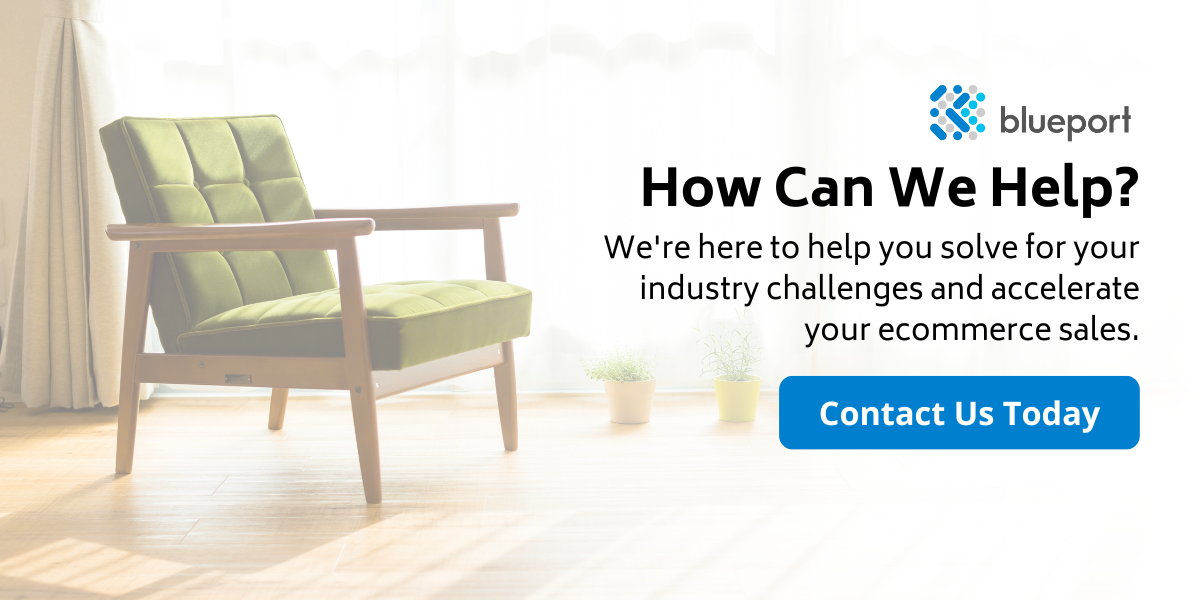In today's furniture business landscape, technology plays an increasingly pivotal role, constantly evolving and reshaping the way we operate. Adapting to these shifts is not just a choice; it's a necessity.
To stay ahead in a competitive market, furniture retailers need to be aware of and understand how new software, platform updates, and industry trends could improve their bottom line.
However, keeping up with the latest trends in furniture ecommerce can be time consuming for you and your team. So, how can you run a business and stay ahead of the tech curve?
Staying Ahead of the Furniture Ecommerce Tech Curve
Successful businesses anticipate change, scale, and stay agile and flexible. They understand that technological advances can be an opportunity — or a threat.
As a furniture retailer, ecommerce platform enhancements can be an opportunity for you, but only when the new features and technology adaptations are relevant to your business.
For a competitive advantage and sustainable results, you need a partner with a vertical focus on furniture who enables you to focus on your business. The right partner will monitor the changing technology landscape and retail furniture trends, implement those that make sense, and keep you ahead of the tech curve.
The right partner is Blueport.
Leveraging Blueport’s Expertise To Stay Ahead
When you are using a generic ecommerce platform, your tech spend is often helping fund features and upgrades that may not be relevant to your business. Instead, when you re-platform with Blueport, you can be confident that the platform will adapt and scale with your business. With a software roadmap created for the retail furniture industry, Blueport addresses your unique — and often complex — business needs.
Blueport’s Retail Furniture Experience
The Blueport team has over 275+ combined years of experience selling furniture online. We understand your business, giving us the perspective to understand how emerging technologies can — or shouldn’t — be used.
Our team of expert Furniture Industry Professionals, Developers, QA professionals, IT operators, and DevOps engineers are uniquely situated to support your business. Starting with implementation services and continuing through your business’ growth, changing industry and ecommerce tech trends, and technology advances, Blueport sets your business up for success.
Creating Operational Efficiencies With Blueport
Your furniture ERP is deeply embedded in your operations. Although many generic ecommerce platforms force a change to a generic ERP, Blueport’s ecommerce solution integrates seamlessly with your furniture ERP. You’ll be able to keep your current operational processes while adding additional efficiencies.
Managing the complexities of your product and orders can be challenging, but it is much easier with Blueport. During implementation, we’ll connect your ERP and ecommerce platform and import your existing data. Then, our comprehensive product information tools let you enhance your product data and merchandise your products. Finally, when someone places an online order, the order is injected into your ERP system, just as though a salesperson had written the order.
Your furniture ecommerce website needs to do more than sell products online. Instead, it needs to enable an omnichannel strategy. Shoppers rely more than ever on research online, and your customers will often drop in at their local store to see your products in person. With Blueport, your customers will have a unified shopping experience, and your in-store sales team will have the tools they need, including OneView — a tool that bridges the divide between online and in-store shopping.
Our Agile Ecommerce Platform Development Process
Deploying new features could be disruptive to your business, but it isn’t with Blueport. Our leading integration layer means there’s no need to dismantle your ecommerce infrastructure every time technology changes. We also leverage agile software development best practices to offer continuous enhancements and feature rollouts as often as every two weeks.
Agile development prioritizes flexibility, collaboration, and customer satisfaction. At Blueport, our agile process lets us deliver the highest value to your business in the shortest time to market. We unlock infinitely scalable capacity for your business, flexibility to meet your unique needs, and the agility to implement software updates that keep you ahead of your competition.
Learn the Secrets of Staying Ahead With Our Furniture Ecommerce Solution
Blueport delivers a high return on your investment (ROI), which is why we are already helping many top 100 furniture retailers. What really matters to you, though, is how we can help you and your business implement the best operational and ecommerce tech stack that lets you stay ahead of the tech curve.
Contact us today and see how Blueport can power your business today and into the future.






